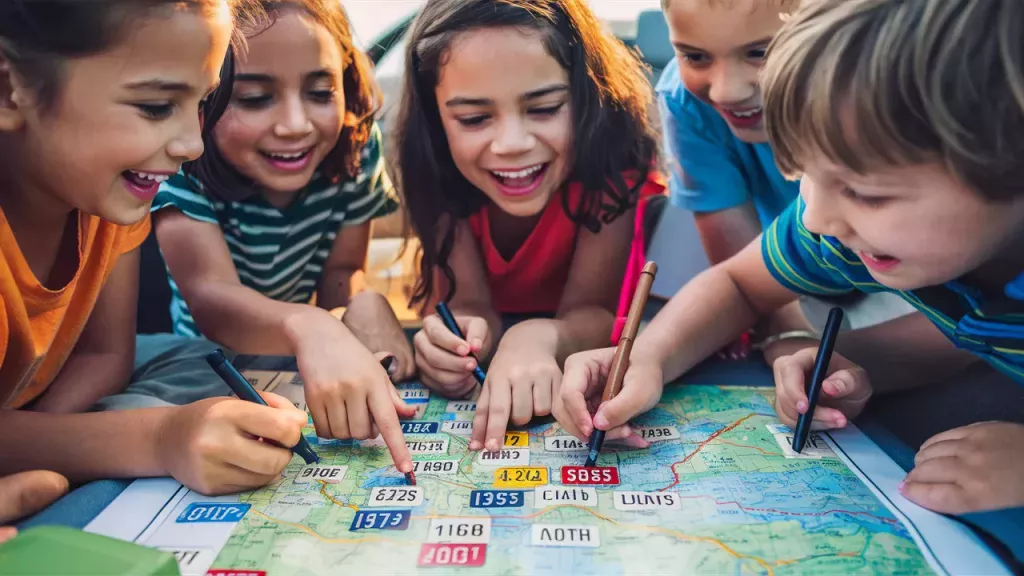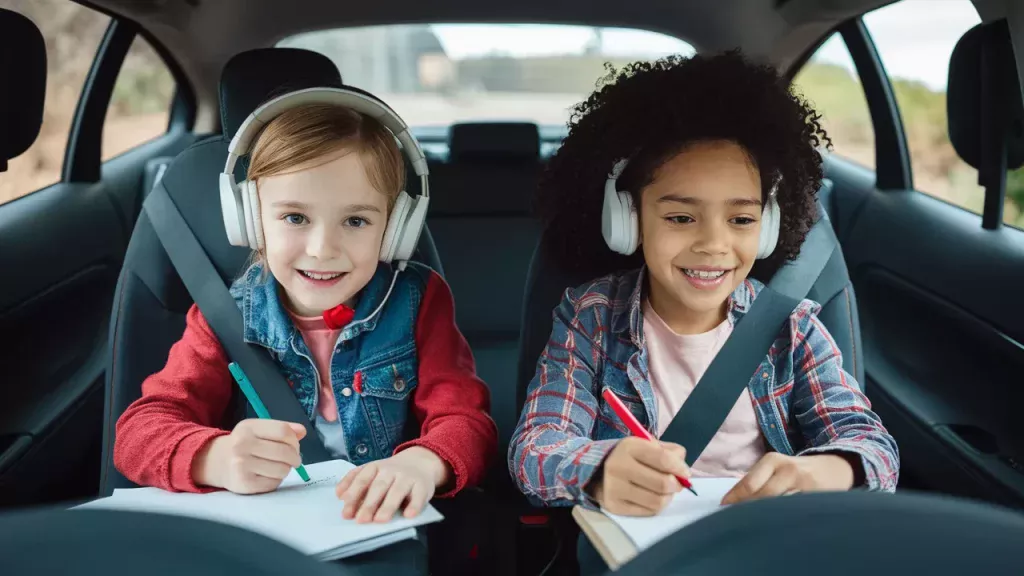15 Road Trip Games for Kids That Are Fun and Screen-Free (Easy Ideas!)
Planning a family road trip soon? Long drives with kids can be a challenge, especially when the dreaded “Are we there yet?” starts up 30 minutes into the journey.
Luckily, you don’t have to rely on screens to keep your little ones entertained.
These road trip games for kids are fun, easy to play, and don’t require any fancy supplies — just imagination, laughter, and a sense of adventure!
Whether you’re headed on a weekend getaway or cross-country adventure, these ideas will keep kids (and parents!) happy mile after mile.
This post may contain affiliate links. Full privacy policy and disclosure here.

Why Road Trip Games for Kids Are a Must
Road trips are a fantastic way to create lasting family memories. But sitting still for hours can be tough for young kids. That’s where road trip games for kids come in — they help:
- Break up the monotony
- Encourage creativity and conversation
- Strengthen family bonds
- Reduce motion sickness caused by screens
- Make time pass faster
If you’re looking for more tips to make your next road trip a success, don’t miss this ultimate guide to road tripping with kids.
Essentials to Pack for Road Trip Games
Before we dive into the best road trip games for kids, here are a few simple supplies that can make game time easier (and less messy):
✅ Kids’ Magnetic Travel Game Set
✅ Dry Erase Travel Boards for Kids
✅ Travel Bingo Cards
✅ Reusable Sticker Pads
✅ Would You Rather? Family Road Trip Edition Cards

25 Awesome Road Trip Games for Kids
1. License Plate Game
Spot plates from as many different states, provinces, or countries as possible. Write them down and see who gets the most!
2. I Spy
A classic! One player says “I spy with my little eye something…” and others guess.
3. 20 Questions
Think of a person, place, or thing. Others have 20 yes-or-no questions to figure it out.
4. Would You Rather?
Silly dilemmas (“Would you rather have a pet dinosaur or a pet dragon?”) spark tons of giggles.
👉 Pack this travel-size Would You Rather game for endless ideas!
5. Alphabet Game
Find items outside starting with each letter of the alphabet, in order.
6. Road Sign Bingo
Look for road signs like “Stop” or “Deer Crossing” and mark them off.
7. Fortunately, Unfortunately
Take turns adding to a story — one sentence must start with “fortunately,” the next with “unfortunately.”
8. Animal Alphabet Game
Name animals in alphabetical order: “Alligator, Bear, Cat, Dog…”
9. Counting Cows
Pick a side of the car. Count cows. First team to reach 50 wins!
10. Cloud Story Game
Make up stories based on the shapes you see in the clouds.
11. Guess the Vehicle
Listen to the sound of approaching vehicles and guess: Is it a truck, motorcycle, or minivan?
12. Two Truths and a Lie
Share two truths and one fib — can others guess the fib?
13. Silly Story Chain
Each player adds one sentence to a silly ongoing story.
14. Name That Tune
Hum a song for others to guess.
15. I’m Thinking Of…
One player picks something visible outside; others guess with yes/no questions.

Bonus: 10 More Fun Screen-Free Activities
Because when it comes to road trip games for kids, having lots of options is key!
16. Color Hunt
Find something red, something blue, something green — race to find it first!
17. Word Association
One person says a word; next says a related word. No repeats allowed!
18. Travel Pictionary
Draw on dry-erase travel boards — others guess your masterpiece.
19. Sound Safari
Identify different sounds heard during the trip — birds, trucks, trains.
20. Road Trip Riddles
Tell riddles for others to solve.
21. Spot the Animal
Who can spot the most different animals during the trip?
22. The Quiet Game
Perfect for when you need a little peace and quiet — who can stay silent the longest?
23. Backseat Artist
One child describes an object, the other draws it without looking.
24. Travel Would You Rather?
Use this for endless debates: Would You Rather? cards.
25. Story Dice
Roll dice with pictures to invent silly stories.
👉 Check out story dice for kids for travel-friendly fun!
FAQs About Road Trip Games for Kids
What are the best road trip games for young kids?
Simple games like “I Spy,” “20 Questions,” and the “Alphabet Game” are perfect for young children because they require little setup and keep them engaged.
How can I prepare for road trip games ahead of time?
Pack a small travel bag with essentials like notepads, pencils, magnetic boards, and printable game sheets to make starting a game on the road quick and easy.
Are road trip games suitable for toddlers?
Yes! Simple games like “I Spy Colors” and “Animal Sounds” are perfect for 2–4 year olds. Also, check out these stress-free potty training tips for road trips if you have a toddler in tow.
Can you play road trip games without any supplies?
Yes! Verbal games like “Would You Rather” and “20 Questions” need no materials and are great options for spontaneous fun.
How can I prevent kids from getting bored of the same games?
Rotate between different games every 20–30 minutes and offer small prizes or treats for participation to keep excitement high.
How do you keep kids entertained on long road trips?
Bring a variety of road trip games for kids — from scavenger hunts to silly stories — and rotate activities every 20–30 minutes. Mix in audiobooks, music, and podcasts!
What are good family podcasts to listen to during a trip?
When kids need a break from games, download a few family-friendly podcasts for road trips before you leave!
What’s the best way to plan a road trip with little kids?
It’s all about planning lots of breaks, packing snacks, and having flexible expectations. For more tips, visit 5 tips for planning a road trip with a baby.
What are the best audiobooks for family road trips?
Audiobooks are a lifesaver! Try a few from this list of the best family audiobooks for road trips.
Final Thoughts: Make Memories (Not Meltdowns)
With a little preparation and the right list of road trip games for kids, your next adventure can be filled with laughter, creativity, and connection.
So pack your travel games, stock up on snacks, and get ready to hit the open road — screen-free fun awaits!
✨ Planning a road trip soon? Don’t forget to Pin this for easy ideas on the go! 🚗💨

✨ Got a favorite road trip game we missed?
Drop your best kid-friendly travel games in the comments — I’m always looking for new ideas to try with my crew!
